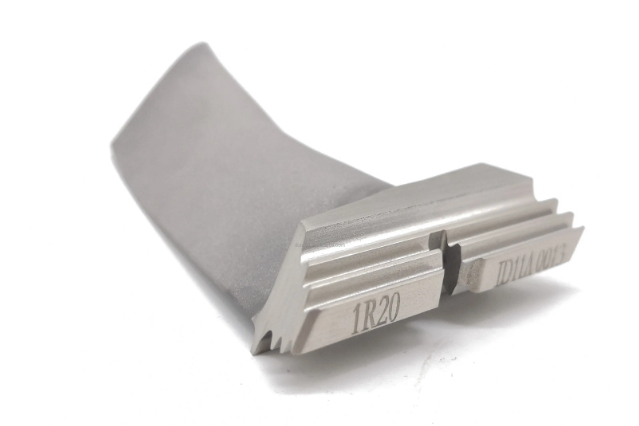Casting Superalloys Inconel 625 Turbine Blade Vacuum Investment Casting Manufacturer
Introduction
Inconel 625, a nickel-chromium-molybdenum alloy, is renowned for its exceptional high-temperature strength, outstanding oxidation resistance, and superior fatigue and creep performance, making it an excellent material for advanced turbine blade applications. At Neway AeroTech, we specialize in vacuum investment casting of Inconel alloys, delivering precision-engineered Inconel 625 turbine blades with tight dimensional tolerances (±0.05 mm) and outstanding microstructural integrity.
Through advanced vacuum casting processes and aerospace-grade quality assurance, we manufacture Inconel 625 turbine blades capable of superior performance under extreme thermal and mechanical stresses.
Core Manufacturing Challenges for Inconel 625 Turbine Blades
Producing turbine blades from Inconel 625 via vacuum investment casting presents unique challenges:
Maintaining alloy purity by preventing oxidation and contamination during melting and casting.
Achieving tight dimensional tolerances (±0.05 mm) and surface finishes (Ra ≤3.2 µm) for aerodynamic efficiency and engine performance.
Controlling solidification parameters to produce homogeneous microstructures and avoid dendritic segregation.
Managing shrinkage and ensuring excellent metallurgical bonding to eliminate internal porosity.
Vacuum Investment Casting Process for Inconel 625 Turbine Blades
Our precision vacuum investment casting process includes:
Wax Pattern Creation: High-precision wax molds are developed using CNC machining or rapid prototyping for complex airfoil profiles.
Ceramic Shell Formation: Multiple coatings of ceramic slurry and refractory sand create a robust, heat-resistant mold.
Dewaxing and Shell Firing: Wax is removed via autoclave at ~150°C, followed by shell firing at ~1000°C to strengthen the mold.
Vacuum Melting and Pouring: Inconel 625 ingots are melted under vacuum (<0.01 Pa) and poured into ceramic shells to eliminate oxidation.
Controlled Solidification: Carefully managed cooling rates produce fine-grained, defect-free microstructures optimized for fatigue and creep resistance.
Shell Removal and Finishing: Mechanical vibration and chemical cleaning remove the ceramic shell; parts are then CNC machined to final dimensions.
Heat Treatment: Solution annealing and aging treatments are applied to refine the microstructure and enhance mechanical properties.
Comparison of Manufacturing Methods for Inconel 625 Turbine Blades
Manufacturing Method | Dimensional Accuracy | Surface Finish (Ra) | Microstructure Control | Oxidation Resistance | Cost Efficiency |
|---|---|---|---|---|---|
Vacuum Investment Casting | ±0.05 mm | ≤3.2 µm | Excellent | Superior | Medium |
Conventional Investment Casting | ±0.1 mm | ≤6.3 µm | Moderate | Good | Medium |
CNC Machining from Solid | ±0.01 mm | ≤0.8 µm | Limited | Excellent | High |
Manufacturing Method Selection Strategy
Choosing the appropriate method for Inconel 625 turbine blade production depends on component complexity, performance requirements, and cost:
Vacuum Investment Casting: The most suitable method for turbine blades requiring excellent mechanical properties, fine grain structures, and oxidation resistance at elevated temperatures (up to 815°C). Vacuum casting also supports complex airfoil designs and internal cooling passages.
Conventional Investment Casting: Acceptable for less demanding turbine components where moderate dimensional control and performance are sufficient.
CNC Machining: Applied for low-volume prototypes or simpler blade designs where very tight tolerances (±0.01 mm) are necessary, though material waste and cost are higher.
Inconel 625 Performance Matrix
Property | Value | Notes |
|---|---|---|
Max Service Temperature (°C) | 815 | Continuous operation capability |
Tensile Strength (MPa) | 965 | High strength at elevated temps |
Yield Strength (MPa) | 450 | Excellent structural stability |
Elongation (%) | 30–40% | High ductility for thermal fatigue |
Creep Resistance | Excellent | Suitable for long-term high-temp use |
Oxidation and Corrosion Resistance | Superior | Outstanding protection in hot gases |
Advantages of Inconel 625 for Turbine Blades
Using Inconel 625 offers critical benefits for turbine applications:
High-Temperature Strength: Retains mechanical integrity under temperatures up to 815°C.
Oxidation and Corrosion Resistance: Maintains surface and internal integrity even in aggressive combustion environments.
Excellent Fatigue and Creep Resistance: Enables longer service life and greater reliability in cyclic thermal and mechanical loads.
Superior Weldability and Repairability: Ideal for components requiring refurbishment during maintenance cycles.
Key Post-processing Techniques
Post-processing enhances blade performance and durability:
Hot Isostatic Pressing (HIP): Increases material density, eliminates porosity, and improves fatigue strength.
Heat Treatment: Solution annealing at ~1100°C followed by aging to optimize phase distribution and mechanical properties.
Precision CNC Machining: Achieves final dimensional accuracy (±0.01 mm) for blade root fitting and aerodynamic surface control.
Surface Finishing: Polishing and shot peening to enhance fatigue life and surface stability.
Testing Methods and Quality Assurance
All Inconel 625 turbine blades undergo rigorous aerospace-grade testing:
Coordinate Measuring Machine (CMM): Dimensional inspection with ±0.005 mm precision.
X-ray Non-destructive Testing: Detection of internal porosity, inclusions, and structural anomalies.
Metallographic Microscopy: Analysis of grain size and phase distribution.
Tensile Testing: Verification of tensile strength, yield strength, and elongation properties.
All quality processes are certified under AS9100 aerospace standards.
Case Study: Vacuum Investment Cast Inconel 625 Turbine Blades
Neway AeroTech delivered Inconel 625 turbine blades for a gas turbine OEM project:
Service Temperature: Continuous operation at 815°C
Dimensional Precision: ±0.05 mm achieved across airfoil geometries
Surface Finish: Ra ≤3.2 µm after finishing
Fatigue Life: Improved by 35% post HIP and heat treatment
Certification: Fully compliant with AS9100 aerospace manufacturing standards
FAQs
Why is Inconel 625 an excellent material choice for turbine blades?
What dimensional tolerances can be achieved with vacuum investment casting for Inconel 625?
How does Hot Isostatic Pressing (HIP) improve turbine blade performance?
What post-processing treatments are used for Inconel 625 blades?
What quality assurance standards do Neway AeroTech follow for casting turbine blades?

